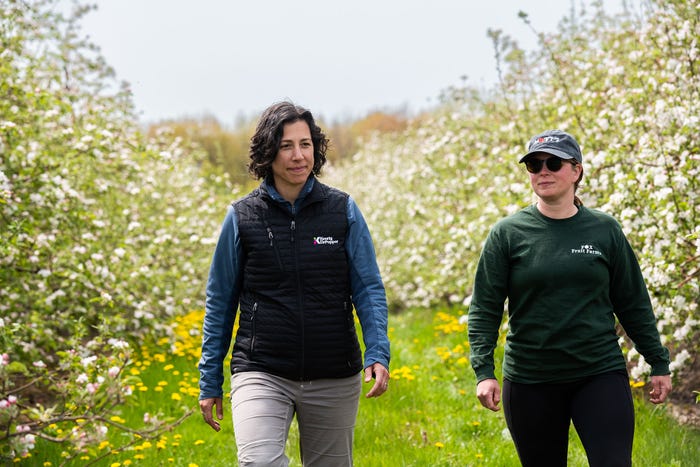January 22, 2024

Although most people have heard of Keurig and Dr. Pepper, correlating farming practices to these iconic brands is probably not something most people would do.
But as director of supply chain sustainability for Keurig-Dr. Pepper, that is exactly what Whitney Kakos does. Her job is to identify ways KDP can source inputs responsibly, and regenerative agriculture has been a key focus of her job.
“Regenerative agriculture is really a broad church. It could be climate, water, soil and finance. It’s not just conventional versus organic,” Kakos told attendees of the recent New York State Agricultural Forum.
While “climate-smart farming” has been a topic for years, “regenerative agriculture,” she said, is a bit like rebranding.
“In agriculture, we have to be holistic,” she said.
KDP’s “Drink Well, Do Good” goals encompass ecology, climate, emissions, energy, water efficiency and stewardship, the supply chain, health and well-being, people and communities, and the environment. And many of these goals hinge on the supply chain.
With Mott’s, a KDP brand that produces apple juice and applesauce, the focus has been on pollinators and cover cropping during orchard block replacement.
“We’re unique in that we buy directly from farmers, not producers or suppliers,” Kakos said.
The relationship between KDP and western New York farmers was rocky at first. Kakos said farmers distrusted the large company, which has changed hands a few times. But partnering with nongovernmental organizations and technical-assistance stakeholders, she said, has helped KDP make headway.
These organizations include the IPM Institute of North America, Cornell University, the New York State Soil & Water Conservation Committee, and the Wayne County Soil & Water Conservation District.
“We worked hard to develop this with grower needs in mind,” Kakos said. “It’s a win for businesses and a win for growers.”

SUPPLY CHAIN COORDINATOR: Whitney Kakos (left), director of supply chain sustainability at Keurig-Dr. Pepper, tours Orchard Fox Farms in western New York. She talked about the food company’s efforts to help farmers in western New York at the New York State Agricultural Forum. (Photo courtesy of Keurig-Dr. Pepper)
The voluntary Native Pollinator Program has just completed its first year. A total of 15 of Mott’s 100 growers in western New York participated. Kakos said growers benefited from technical assistance from IPM and Cornell, as well as from peer mentoring. They also received an assessment of their pollinator habitat quality from Cornell. KDP and the Natural Resources Conservation Service provided financial support.
The IPM Institute offered technical advice on how farmers used chemicals. Cornell helped with assessing pollinator health and recommended how farmers could improve pollinator habitat. Wayne County Soil & Water facilitated grants to help farmers adopt conservation practices to protect Lake Ontario and other waterways.
In turn, growers had to adjust their spray program to reduce effects on native bees during and around pollination, and complete three five-minute bee abundance surveys. Cornell personnel helped growers learn to identify native bees. This involved standing in one spot to count identified bees for five minutes.
The spray adjustment involved using pesticides with reduced toxicity to pollinators between first pink and one week after petal fall; completing two scouting events to support pest management activities at pink and petal fall; providing justification through scouting records if and where high-risk pesticides are used; and avoiding pesticide synergies, according to the provided spray guide.
Among the challenges of the first year was keeping track of spray use and pest scouting information.
“Record-keeping, it’s hard to do,” Kakos said. “We’re looking at how we can improve that.”
In its second year, the program will address habitat and nesting-site-quality needs in enrolled orchard blocks.
An aerial assessment of surrounding habitat will be done to focus on the natural habitat of the farm. This will help farmers and KDP know how they can improve forage for bees.
Cover cropping will also be a focus this year. Kakos said she envisions using cover crops in areas where farmers are taking out and replacing trees.
“We’re focused on nature and livelihoods for apple growers,” she said.
Sergeant writes from central New York.
About the Author(s)
You May Also Like




